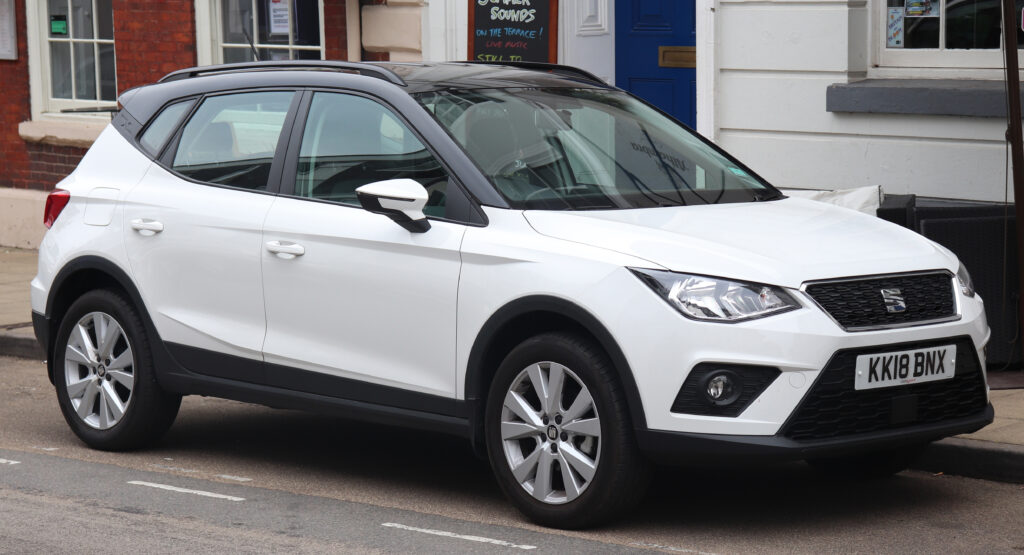
SEAT Arona Handbrake Adjustment: The Complete Guide for Precision, Safety & Smooth Driving

- Understanding the SEAT Arona Handbrake System
- Why Handbrake Adjustment Matters
- Signs Your SEAT Arona Needs a Handbrake Adjustment
- How the SEAT Arona Handbrake System Works
- Tools You’ll Need for Proper Adjustment
- Preparation: Safety First
- Step-By-Step SEAT Arona Handbrake Adjustment
- Fine-Tuning the Adjustment
- Common SEAT Arona Handbrake Problems
- How Often Should You Adjust the SEAT Arona Handbrake?
- Professional vs DIY Adjustment
- Brake Drag Warning Signs
- Staying MOT-Ready
- Tips to Maximise Handbrake Longevity
- Conclusion: A Precise Handbrake Means a Safer SEAT Arona
- FAQs
Understanding the SEAT Arona Handbrake System
Every SEAT Arona—whether you’re driving a frugal 1.0 TSI, a torquey 1.6 TDI, or one of the newer models—relies on a tightly tuned handbrake mechanism to keep the car locked in place. When that lever starts pulling too high or feeling spongy, we know something’s out of balance. A loose or poorly adjusted handbrake is not just annoying; it’s a sneaky little safety hazard waiting to surprise you on a steep hill.
In this guide, we break down how the handbrake system works, when to adjust it, how to complete the full adjustment process, and how to diagnose the Arona’s common handbrake problems—from stretched cables to sticking calipers.
Why Handbrake Adjustment Matters
We’re not just doing this for a smoother pull. We’re keeping your Arona:
- Safe on inclines
- Responsive in emergency situations
- Wear-free by preventing uneven brake wear
- MOT-ready, avoiding common “parking brake efficiency” failures
- Comfortable to drive without yanking the lever sky-high
A properly adjusted handbrake transforms the way the car feels—like tightening up the strings on a guitar until everything plays clean.
Signs Your SEAT Arona Needs a Handbrake Adjustment
Your Arona will whisper its warnings long before the problem becomes dramatic. Look for:
• Excessive Handbrake Lever Travel
If you’re pulling more than 6–8 clicks, the cable is usually too loose.
• Car Rolling Slightly on Hills
A gentle nudge of movement on a slope means the brake isn’t clamping firmly enough.
• Spongy or Weak Handbrake Feel
The lever feels soft and unresponsive—classic signs of cable slack.
• Uneven Braking at the Rear
If only one wheel grabs, an adjustment or caliper service is needed.
• High MOT Brake Imbalance
The Arona is known to fail MOTs for parking brake imbalance at the rear.
How the SEAT Arona Handbrake System Works
Before we dive into the nuts and bolts of adjustment, it's worth understanding what’s happening under the centre console.
Key System Components
- Handbrake Lever – mounted inside the cabin
- Adjusting Nut – regulates cable tension
- Handbrake Cable – splits into two rear brake links on most models
- Rear Brake Calipers – include an integrated handbrake mechanism
- Return Springs – ensure the system resets properly
Cable-Operated, Caliper-Integrated Design
Unlike older drum-brake systems, the Arona uses rear disc brakes with handbrake mechanisms inside the calipers. This means:
- Over-tightening causes dragging and overheating
- Under-tightening reduces brake holding force
- Calipers must be healthy or adjustment won’t fix the root issue
Tools You’ll Need for Proper Adjustment
We keep it simple and practical. Most DIY enthusiasts will already have these in their toolbox:
- Torx T20 / T25 screwdrivers
- Socket set (usually 10mm for adjusting nut)
- Flat trim removal tools
- Jack and axle stands (if inspecting rear calipers)
- Wheel chocks
- Brake cleaner
- Gloves and protective eyewear
Preparation: Safety First
Before we touch a single bolt:
• Park on flat ground
Handbrake work must be done with zero vehicle movement.
• Apply wheel chocks
Especially behind the front wheels if the rear is lifted.
• Release the handbrake completely
Adjustment always begins with the system free of tension.
• Allow brakes to cool
Hot brakes = inaccurate adjustments and increased risk.
You may be interested in reading Is SEAT Arona a Good Car? The Ultimate Real-World Review You Wish You’d Read Earlier
Is SEAT Arona a Good Car? The Ultimate Real-World Review You Wish You’d Read EarlierStep-By-Step SEAT Arona Handbrake Adjustment
This is the part where we roll our sleeves up and get hands-on.
Step 1: Remove the Centre Console Trim
The handbrake adjusting nut sits below the lever. To access it:
- Slide the front seats back.
- Use your trim tool to lift the handbrake gaiter.
- Remove Torx screws from either side of the console (varies by model year).
- Gently lift the trim to reveal the cable and adjusting nut.
We’ve all had that moment of “Why does this clip feel welded in?”—take it slow, and the trim will give up eventually.
Step 2: Inspect the Cable and Lever Mechanism
Before adjusting, visually check:
- Whether the cable is frayed or stretched
- Whether the lever ratchet moves freely
- If the adjusting nut threads look clean
A damaged cable must be replaced—never tension a faulty one.
Step 3: Adjust the Main Cable Tension
This is where precision matters. Too tight, and the brakes drag. Too loose, and hill holds become risky.
How to Set Correct Tension
- Ensure the handbrake is fully released.
- Turn the adjusting nut clockwise to tighten.
- After every 2–3 turns, test the lever:
- You’re aiming for 6–8 clicks to fully engage.
- Keep adjusting until both rear wheels lock evenly at around 7 clicks.
Step 4: Test Wheel Resistance
With the rear wheels lifted:
- Handbrake released → both wheels should spin freely
- Handbrake at 3 clicks → slight drag should begin
- Handbrake at 7 clicks → wheels should lock fully and equally
Unequal braking? This points to a caliper issue.
Step 5: Reassemble the Trim
Once satisfied with the tension:
- Lower the trim.
- Refit Torx screws.
- Snap the gaiter back into place.
- Ensure no trim rattles or pinched wiring remain.
Fine-Tuning the Adjustment
For perfectionists (we’re definitely in that club), check:
• Lever Pull Height
Too high = loosen cables
Too low = relax the nut slightly
• Cable Symmetry
Both rear wheels should lock simultaneously.
• Brake Surface Condition
Worn discs or pads reduce holding power regardless of adjustment.
Common SEAT Arona Handbrake Problems
Adjustment is only one piece of the puzzle. If the system still misbehaves afterwards, consider these likely culprits.
Sticking Rear Brake Calipers
A very common issue, especially on Arona diesels.
Symptoms include:
- One wheel hotter than the other
- Car pulling when braking
- Handbrake only engaging on one side
Stretched Handbrake Cable
Cables stretch over years of use. If the adjusting nut reaches the end of its thread:
- Replace the cable
- Never overtighten in an attempt to compensate
Seized Caliper Handbrake Arm
This little lever on the rear caliper often seizes due to corrosion.
You may be interested in reading Is SEAT Arona a Good Car? The Ultimate Real-World Review You Wish You’d Read Earlier
Is SEAT Arona a Good Car? The Ultimate Real-World Review You Wish You’d Read Earlier Where to Find Reliable Fiat Repair Services Near Me
Where to Find Reliable Fiat Repair Services Near MeSolution:
Remove, clean, lubricate, and free up the mechanism—or replace the caliper.
Worn Pads or Discs
Thin pads = weak handbrake bite.
Deeply scored discs = uneven clamping surface.
Frozen Cables in Winter
Moisture inside the cable housing leads to cold-weather sticking.
Prevent with:
- Regular lubrication
- Replacing worn cable sheaths
How Often Should You Adjust the SEAT Arona Handbrake?
We recommend:
- Every 12 months during servicing
- After replacing rear pads or discs
- After fitting new handbrake cables
- Whenever lever travel increases noticeably
Professional vs DIY Adjustment
Both are valid, but each comes with pros and cons.
DIY Benefits
- Saves money
- Helps you understand your car intimately
- Quick once you’ve done it once
Professional Adjustment
Choose this if:
- You suspect caliper failure
- The cable is stretched beyond adjustment
- You’re unsure about brake safety
Brake Drag Warning Signs
An over-adjusted handbrake is worse than a loose one. Look out for:
• Burning Smell After Driving
Indicates the rear brakes aren’t releasing.
• Poor Fuel Economy
Dragging brakes = more engine load.
• Rear Wheels Hot to Touch
A clear sign of excessive tension.
Staying MOT-Ready
The Arona often fails on:
- Parking brake efficiency
- Parking brake imbalance
- Cable condition
A fresh adjustment and caliper check will dramatically boost your MOT success odds.
Tips to Maximise Handbrake Longevity
- Use the handbrake gently
- Avoid yanking it aggressively
- Clean rear brakes yearly
- Don’t apply the brake after washing (until dry)
- Test handbrake performance monthly on a gentle incline
Conclusion: A Precise Handbrake Means a Safer SEAT Arona
A finely tuned handbrake gives us confidence, safety, and peace of mind every time we park our Arona on a hill or rely on that lever during stop-start driving. With correct adjustment, regular checks, and good braking habits, the handbrake becomes one of the most reliable and predictable systems on the car.
Whether you’re maintaining your Arona at home or prepping it for an MOT, this guide gives you everything needed to keep that lever responding like new.
FAQs
1. How many clicks should the SEAT Arona handbrake have?
Ideally 6–8 clicks for full engagement—anything more signals loose cables.
2. Why does my Arona roll even with the handbrake on?
Common causes: worn pads, stretched cables, or sticking calipers.
3. Can I adjust the Arona handbrake without removing the centre console?
No—the adjusting nut sits beneath the console area, requiring partial removal.
You may be interested in reading Is SEAT Arona a Good Car? The Ultimate Real-World Review You Wish You’d Read Earlier
Is SEAT Arona a Good Car? The Ultimate Real-World Review You Wish You’d Read Earlier Where to Find Reliable Fiat Repair Services Near Me
Where to Find Reliable Fiat Repair Services Near Me Choosing the Best Seat Covers for Your Fiat 500
Choosing the Best Seat Covers for Your Fiat 5004. How long does handbrake adjustment take?
For most DIYers, 20–40 minutes.
5. Does adjusting the handbrake fix MOT parking brake imbalance?
If the imbalance is minor, yes. Severe imbalance usually indicates a caliper issue.
If you want to know other articles similar to SEAT Arona Handbrake Adjustment: The Complete Guide for Precision, Safety & Smooth Driving you can visit the category Service and Parts.
Deja una respuesta






More content of your interest